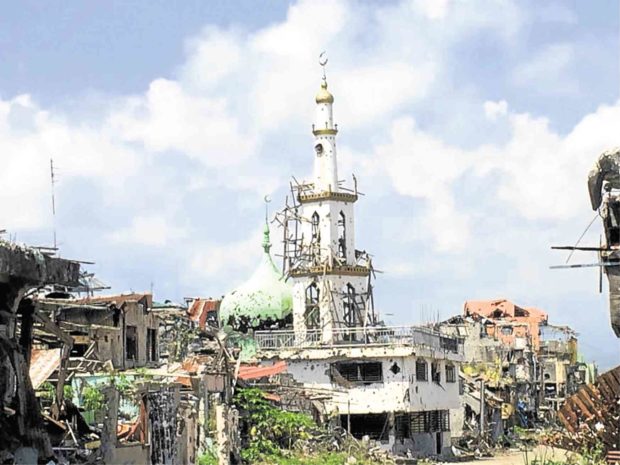
Destruction greeted residents visiting their homes in Marawi City for the first time in five months. —PHOTO FROM LANAO DEL SUR PIO
The latest estimate of the cost of rehabilitating and reconstructing Marawi City now stands at P70 billion to P75 billion, according to Task Force Bangon Marawi chair Eduardo del Rosario.
The reconstruction of the so-called ground zero, or the area where the fighting was concentrated, in Marawi alone will cost P17 billion to P20 billion.
The comprehensive rehabilitation and recovery program, which covers the rest of the city, will cost P55 billion.
Del Rosario said task force officials would hold more consultations with residents to determine the final components of the plan to rebuild the city ravaged by five months of fighting between Islamic State-allied terrorists and government troops.
Timetable
The rehabilitation of ground zero is expected to start in June and be completed in 2021, Del Rosario said in a press briefing in Malacañang.
The task force is in the process of determining the project proponent.
It has selected the Chinese-led Bagong Marawi Consortium (not Bangon Marawi Consortium as earlier reported) as the developer which would be given the status of original proponent after negotiations.
The consortium’s proposal will be opened to a Swiss challenge and that is expected to be completed by May 25 and the project awarded on May 31.
Groundbreaking was set for June.
The Bagong Marawi Consortium is composed of five Chinese firms and four Filipino firms.
Chinese firms
Developers that also submitted unsolicited proposals were dominated by the Chinese—China Railways Group Limited, China Harbour Engineering Company, Power China and the Malaysian firm Alloy MTD.
Del Rosario said Filipino companies were invited to submit proposals, but none did. He would rather not speculate on the reason for this, he said.
The rehabilitation work for Marawi’s ground zero includes debris cleanup, site development, road-widening, development of both sides of the Agus River and Lanao Lake into parks, installation of underground facilities for water, power and telecommunications and the construction of a centralized drainage system leading to a sewage treatment plant.